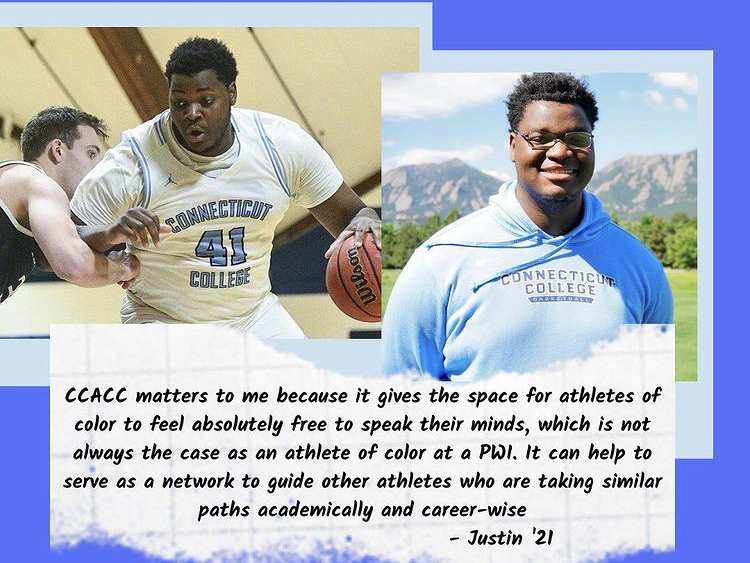Photo Courtesy of @conncoll.aocc Instagram.
In order to thwart a Patrick Mahomes-led offense, the Tampa Bay Buccaneers and their defensive coordinator, Todd Bowles, were tasked with creating an innovative game plan to do what no team has managed to do since Mahomes burst onto the scene in his 2018 MVP season.
The Kansas City Chiefs attempted to defend their 2020 championship season on Feb. 7, 2021 in Super Bowl LV. Led by Mahomes and the Chiefs’ high powered offense, they were the consensus favorites to become the first team to win back to back Super Bowls since their opponent, Tom Brady, did with the New England Patriots in 2004 and 2005. Mahomes, however, was held without a touchdown for the first time all season as the Buccaneers went on to win 31-9.
Bowles, whose first NFL job was as part of the player personnel staff with the Green Bay Packers in 1995, has since held various coaching positions, mainly as a defensive specialist and coordinator. Before joining the Buccaneers in 2019, he held his longest and most recent head coaching job spanning from 2015-18 with the New York Jets, leading them to a mere .375 win percentage during his four seasons in charge. His experience and longevity as a prominent member of the coaching scene in the NFL led him to his first championship as a coach with the Buccaneers, having previously won the 1987 Super Bowl as a player for the then Washington Redskins.
The Buccaneers recent Super Bowl victory was certainly one for the city of Tampa, who has enjoyed recent success from their major sports teams: The Tampa Bay Lightning won the 2020 Stanley Cup while the Rays reached the World Series in the same year. The win was, however, a victory of equal merit for underrepresented coaches around the NFL and in the greater world of sports. The Buccaneers tout an extremely diverse coaching staff, as Bowles, a Black man teamed up with Offensive Coordinator Byron Leftwich and Special Teams Coordinator Keith Armstrong, both part of the Black community. Their diverse staff spans more than just racial boundaries, as Lori Locust and Maral Jaradafir are on their books as two female coaches in an inherently male-dominated sport.
While the Buccaneers staff reflects today’s standards of inclusion, many of its NFL counterparts lack diversity. Seven teams parted ways with their head coaches following the conclusion of the 2020-21 NFL season, leaving highly sought after vacancies. While various Black coaches, like Bowles, conducted interviews with potentially suitable organizations, only two of the seven franchises went in the direction of hiring a person of color . Despite a majority of Black players in the league, there continues to be a lack of representation among coaching staff and more strikingly among owners.
Similarly, athletics at Connecticut College lack representation, as there are no Black coaches at the Predominately White Institution (PWI), with limited representation among other minority groups. The Connecticut College Athletes of Color Coalition (CCACC) was established at the beginning of the fall 2020 semester, when Conn became the final NESCAC school to establish such a coalition. Vice President of the CCACC, Meera Narayanan-Pandit ‘23, explained that the goal of the coalition is “to create a space for student athletes of color at Conn” and stressed its importance as “we do not have a lot of coaches or athletic staff of color at Conn.” Narayanan-Pandit, a member of the women’s tennis team, also brought up the idea of intersectional representation in athletics as “racial representation is just one part of it” as there are many “social areas of diversity.” She concluded, stating that “race happens to be a really important one as we are at a PWI.”
Echoing his co-member of the CCACC, representation, to Justin Nwafor ‘21, is important as “it always gives you a different level of confidence when you see people that look like you.” Nwafor, a member of the Men’s Basketball Team and one of three Community Outreach Chairs for the CCACC, came to Connecticut College as a member of the Science Leader Program, described on the college’s website as a “challenging undergraduate program that will prepare you for a wide range of science-related careers and provide a solid foundation for graduate study or medical school” that is “particularly focused on students from groups that are underrepresented in the sciences.” While the Science Leaders Program was an early sign of Conn’s increasing commitment to inclusion, other initiatives, like “the DIEI program are doing a lot more in representation for students that are on campus, not just through athletics, that we are building through the coalition, but having a lot more students coming to campus and being comfortable” which ultimately leads to “succeeding in athletics and academics,” stated Nwafor.
Similarly, Nwafor, in his last semester on campus, spoke to the underclassmen leadership in the field of representation. “It’s important that young people are doing it too, there’s the People of Color alliance that is pretty much all freshmen […] are able to plant the seeds and watch those things grow,” he concluded.
Upon its creation, the CCACC submitted a list of demands ranging from funding to inclusion in the Athletic Department. So far, this has resulted in a 21 day allyship program completed by all coaches throughout the month of January. The Athletic Department has additionally applied for a Strategic Alliance Matching Grant through the NCAA that, if approved, would provide Camel Athletics with funding to support representation-based initiatives and the hiring of people of color to administrative positions.









